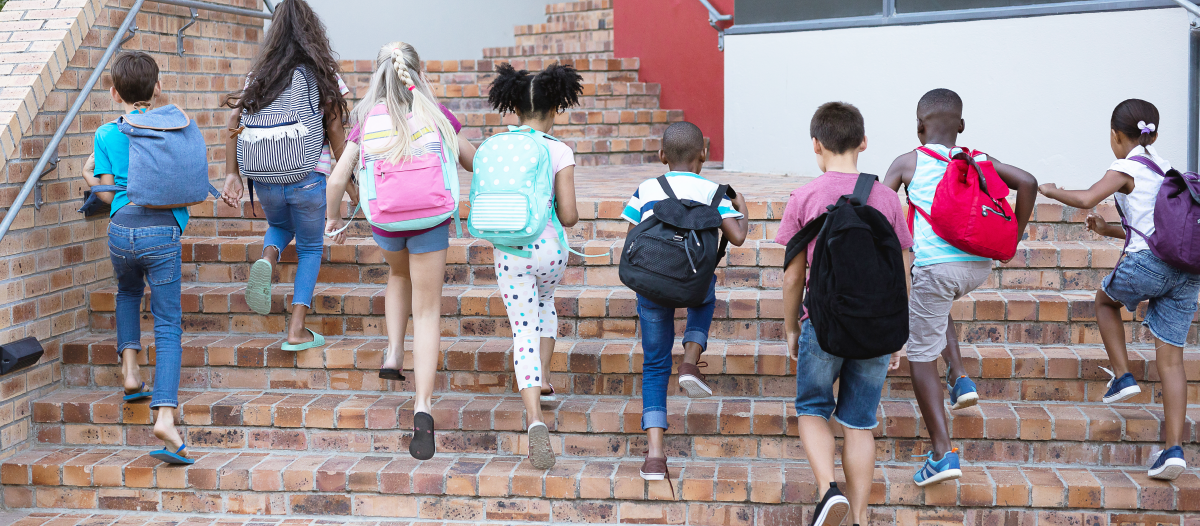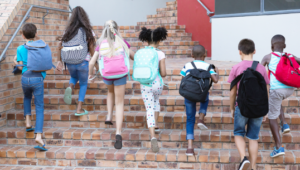Valuing Student Diversity in Learning

Centering equity and justice in my teaching practice has taken time and even caused moments of intense self-doubt and feelings of failure. Sometimes these feelings of doubt come from the sense that the process of creating equity needs to be complex and deep. But over the years, I’ve found that creating simple opportunities for my elementary students to bring their whole selves into the classroom has opened the door to a natural process of reciprocal disclosure between students, families, and our teaching team that is slowly transforming the way we all interact. I’m convinced that being intentional in how I create these opportunities for students and deepening my capacity to make students feel seen, valued, and celebrated as whole people is the key to meaningful education.
education.
Ways to Bring Students’ Unique Backgrounds to the Forefront of Their Learning
The list below is only a small window into my own ways of valuing differences in my classroom and does not in any way reflect the breadth of what can be done. Many more opportunities can be found in Jane Cofie’s Strengthening the Parent-Teacher Partnership.
- Neighborhood walks
Every year, I set aside a couple of days in August to walk through the different neighborhoods my students live in. I practice a mindful listening walk during which I take in the place with as little critical analysis as possible, and I consider how my students’ experiences of life might be informed by their surroundings. This preparation gives me a strong starting point without making families or students disclose their experiences before we have built a foundation of trust.
2. Morning Meetings
The daily practice of gathering with my students to build a positive sense of community, affirm the importance of each individual, and simply enjoy being together provides an essential space for learning more about each other’s unique backgrounds. I start each year using simple and safe topics for sharing to slowly build a culture of mutual trust and respect. I fully participate and share small pieces of my own background, taking care to be authentic and model safe disclosure while quickly returning the focus to my students. I also actively teach and have students practice listening and responding with respect in a classroom setting.
3. Classroom walls
My years as a Responsive Classroom educator have helped me shift my emphasis from the teacher-driven approach I was trained in toward a student-centered approach to classroom decision-making. One way this is visible is that the classroom walls belong to my students. Students select or make their own anchor charts; the other classroom displays are driven by student choice. I guide this process, but I do not drive it. When students trust me to support their use of the classroom space to make their identities and learning visible, they are willing to bring their unique backgrounds into the classroom in very tangible ways.
4. Student choice
Intentionally embedding choice as a critical part of the learning process invites students to lean on their unique backgrounds to produce work through which they can experience academic success while also celebrating the broader influences that make them who they are. In response to writing and speaking assignments in which students get to choose the topic, I have had students present their findings from an interview with a grandparent, research information around a treasured artifact from their home, and share a favorite song from their church. When students have a say in the topic, they remain engaged in writing beyond the parameters of specific assignments, making the choice to reveal more about their lives and experiences.
5. Family read-alouds
During our time in virtual learning, this practice became parents’ favorite way to contribute to the classroom. Now that we are back in person, I continue to seek family read-aloud videos to broadcast in the classroom. I share with parents a Google doc that lists all the books already read by families so they can choose a new one that speaks to them, but I give no guidance beyond that. Parents, grandparents, uncles, aunts, and siblings have all contributed to this endeavor and have recorded their read-alouds from their homes, backyards, offices, and neighborhood parks. Some parents read short stories or poems in their native language and then reread them in English, which opens doors of curiosity and interest among classmates, many of whom had not realized their classmates were bilingual.
6. Poetry
Poetry is a legitimate academic discipline and tool for the development of strong reading and writing skills; it is also a pathway that allows students to speak and write in the sounds and rhythms of their unique backgrounds. Bringing diverse poetic voices into my classroom helps me to introduce important experiences in a way that elementary students can process, while also providing mirrors and windows that students can connect with and learn from. Leveraging this art form along with other performance activities has emboldened my students to embody their unique backgrounds as a rich source of power for bringing their personal voice to life.
If at First You Don’t Succeed
Have I made missteps along the way? Yes! Many times, despite the best of intentions. I had to go back to the beginning and train myself in what Nicole Leta Brittingham Furlonge, director of the Klingenstein Center at Columbia University’s Teachers College, calls “the habits of a listening mind.” Without this work, I would have missed so many of the offerings from students and families that were quietly communicated as they tested the waters of safety in my presence. Learning truly is a multidirectional dialogue through which everyone involved is changed. I want whole, messy, difficult, beautifully unique students to teach and learn from every day. And on the weekends, I sleep.
Written by Christine Lewis, a consulting teacher for Center for Responsive Schools with eighteen years of experience teaching elementary school
